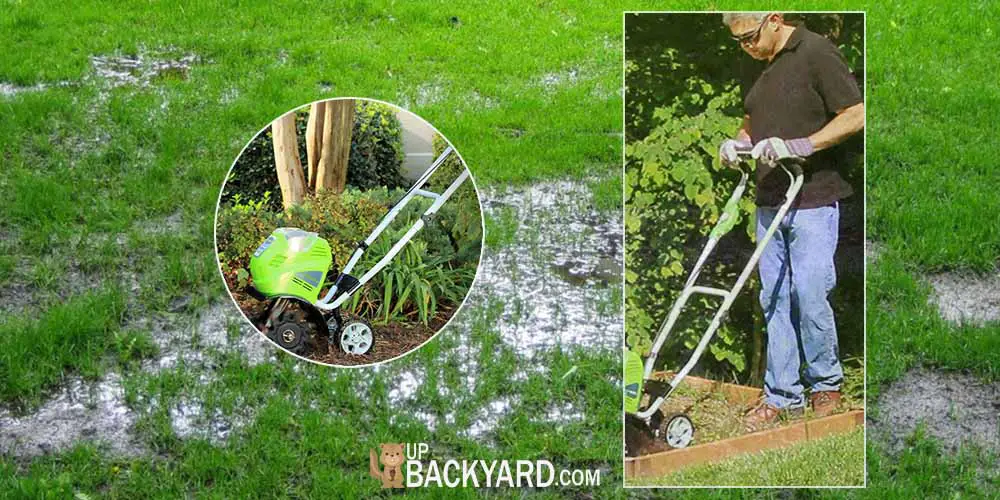Clay soil provides many benefits if you’re willing to test its full potential as one of the best soils for growing plants. It has a great capacity to hold the nutrients and water that your lawn needs. The grass will portray the strain by battling with heavy and compacted clay soil under your lawn.
The section on taking care of clay soil for lawns is ideal for readers who desire to take good care of the lawns comprising clay soil. When you fix your clay soil on the lawn, it will give you a healthy and less strain on the lawn.
Also, it will need less fertilizer and irrigation with healthier grass on your lawn. Clay soil compacted will inhibit the healthy growth of grass on your lawn. Clay soil can be compact due to heavy rains beating the particles together or walking on the clay soil when it gets wet.
After the clay soil is compacted, it will restrict air movement, water, and nutrients, leaving the grass vulnerable to diseases and nutrient deficiencies.
5 Tips To Fix Clay Soil For Your Lawn
Below are some tips on how to fix clay soil lawn to reap better results:
1. Use Soil Amendments In Your Lawn
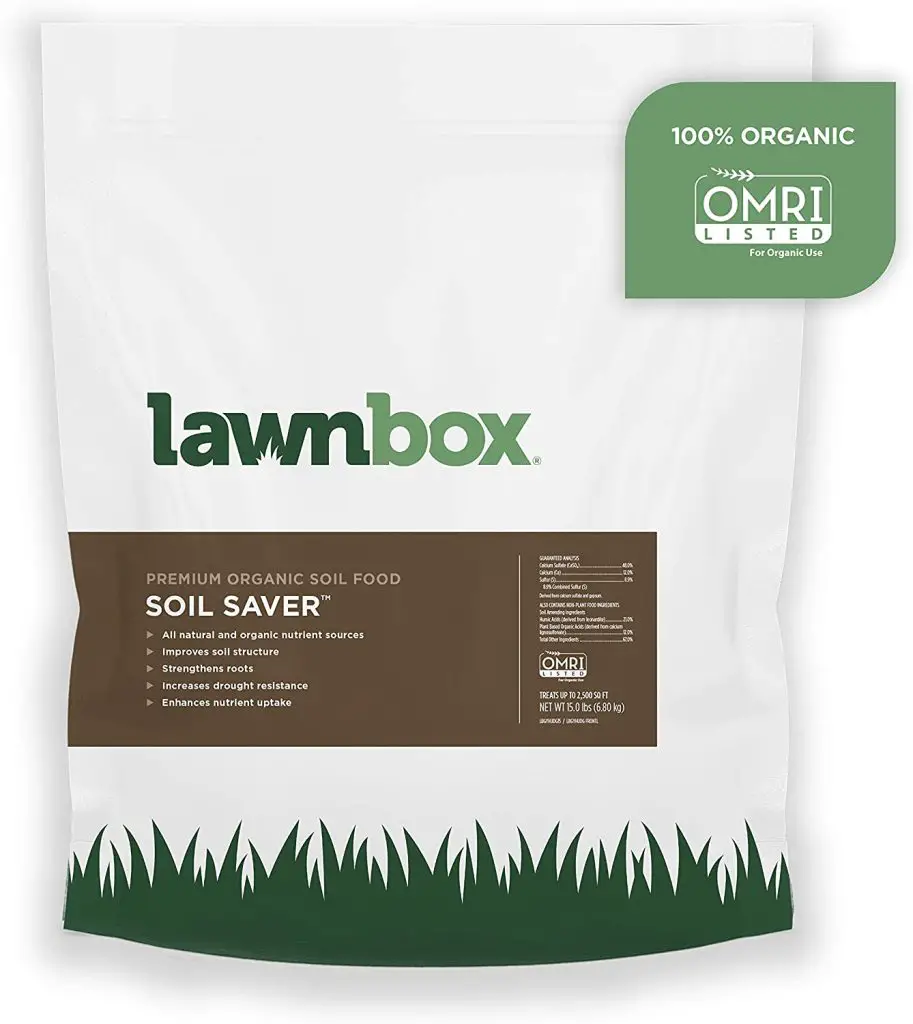
Soil amendments like gypsum and organic matter help improve the heavy clay and relieve it from compaction. When you amend your clay soil properly, you will be able to overcome the compacted and heavy clay.
This will put your clay back on track and offer a healthier and well-grown lawn. Adding materials like pine bark, gypsum, organic compost, peat moss, and composted leaves will help improve the soil’s structure and remove compaction and drainage problems.
Be keen NOT to add moss or sand to the clay as it may worsen the problems. Using an extension agent or simply a soil test, you can determine the appropriate quantity of organic matter that you are required to add to the lawn soil.
There is a general rule that you should add a layer of about 3 to 6 inches of organic matter before you start planting and move it down to about 10 to 12 inches, where most roots are found.
You can add roughly three inches of organic matter to act as a top dressing as the years go by. In the process of decomposing organic mulch, it will keep improving the clay. Gypsum improves your soil and offers additional benefits to your lawn.
It can be easily applied to the lawn soil using a lawn spreader. Gypsum is a great amendment to improve your clay soil structure and relieve compaction in the lawns. It will work to loosen the compacted soil, allow water penetration, and improve drainage.
Gypsum will correct the soil’s conditions and allow better growth for the grass. It also adds calcium and sulfur to the grass on the lawn.
Adding calcium to your soil will change the soil pH. Therefore, it is wise to improve the condition of the clay soil in the lawn by mixing it or tilling it with a lot of organic matter. Adding up organic matter to the clay soil will create a bio-active soil.
2. Top Dressing Of Your Lawn And Watering Your Lawn
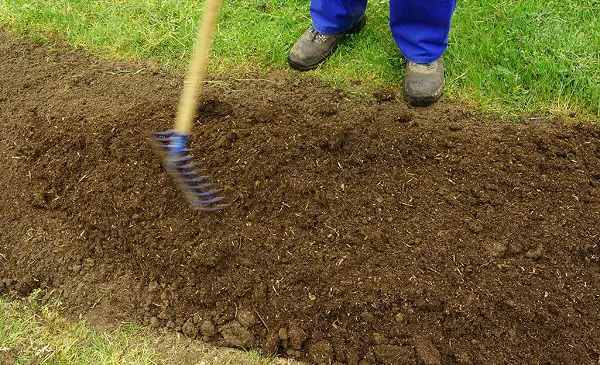
This is the best way to improve your clay soil that already has a lawn without the need to till the lawn with organic matter. Top dress your lawn using compost and leave the clippings for it to decompose and improve the soil.
However, it will take a long time if the clay is dense. It takes a longer period for clay soil to improve from topdressing because the soil microbes required when decomposing organic matter is aerobic. Aerobic means that they need oxygen to survive.
Clay soil contains approximately only 3 to 5% of the air in it, and the majority of it is on the top layer of the soil close to the surface. Ideal garden or lawn soil should have at least 20 to 25% air.
At the same time, clay contains microscopic particles, and the particles are tightly bonded together, making it have very little air space.
Topdressing includes loam, sand, and peat spread in several ratios but varies depending on the soil type and the location it is found in. Grass in a clay soil lawn can face the challenge of having shallow roots. You should water the lawn less often but deeply.
When you water your clay soil shallowly and lightly, it will aggravate the problem of the grass growing shallowly. You can water your lawn once a week at around an inch of water only.
3. Creating Of Temporary Channels And Pores And Remember To Install A Drainage System
A faster and quicker solution to fixing your problem can be by building temporary pores and channels in the clay soil.
By increasing the quantity of air entering the clay, even by a small amount, you can increase the soil-building microbes that are beneficial in generating and growing the numbers.
Find a supplement that can break apart the bonds in the clay and build a tiny air space deep inside the clay. The temporary pores will improve drainage in the soil, free up water and nutrients deep in the soil, assist in moving organic matter, and encourage the grass in the lawn to deep root.
Installing A Drainage System In Your Lawn And Keep Off Your Lawn
Clay soil saturates water easily but drains slowly. More so during the seasons with heavy rains and snow. Have a system for draining the lawn which can transfer water from the lawn to another area.
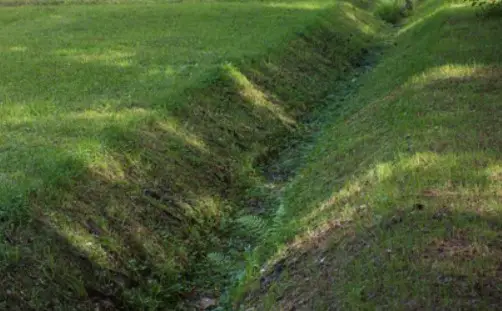
You can drain the water from the lawn through tiles or pipes to other areas, including a ditch, an artificial bed, or a waterway.
Clay soil will compact, especially if heavy foot traffic is on the lawn. When the soil is wet, avoid excessive mowing and play.
Instead, you can place stepping stones, sidewalks, or even build a path close to the entrance so that people can avoid walking on the lawn. This can be ideal for the children to play and be a designated area for seating.
4. Test The Clay Soil And Mulch Your Law Often
A lawn soil test is simply an expert analysis of what soil is made up of. A soil test is run on the lawn with the help of a customized soil probe to extract cores of soil from a variety of areas in the soil composition of the lawn.
The cores pulled from the soil work as samples to be tested and analyzed in a laboratory. However, you can easily tell if your soil has a problem even before you take the soil to the laboratory. You can indicate that your soil has a compaction problem if you struggle to attain the soil probe samples.
A soil test will help determine your soil’s fertility by measuring the number of nutrients such as nitrogen, potassium, and phosphorus in the soil.
Purchase a soil testing kit for your lawn, or you can take a sample of your soil for analysis at your local extension office. After that, you can study the results you find and work on amending the soil accordingly.
Ensure You Mulch Your Lawn Often
You can once in a while take off the lawnmower bag and let leaf clippings and grass remain on the grass. The mulch will decompose and provide nutrients to the lawn and simultaneously attract earthworms which are lawn friendly. Earthworms digest the mulch and fertilize the lawn while moving in and out of the soil.
The organic mulch will break up and loosen the clay particles, allowing air, nutrients, and water to go to the roots of the grass.
You might also like: When to Apply Milorganite (Tips & Reminders)
5. Aerate And Till The Lawn Soil
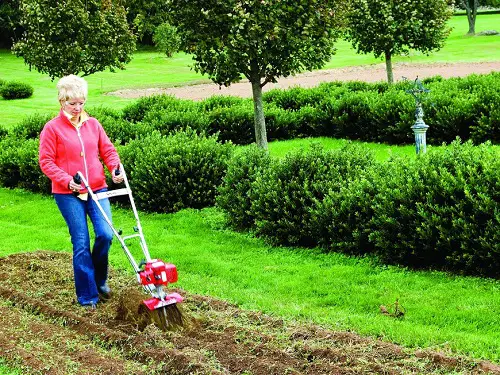
Your lawn, especially if it comprises of clay soil, it requires consistent aeration so that water and air can move freely in the soil. The air circulation will get rid of plugs of dirt and will break up the soil particles to allow the grassroots to spread easily. Aerate your compacted soil at least twice a year.
At the same time, on tilling the lawn, a neglected lawn might require a full overhaul. You can use a self-propelled rototiller to break through the lawn’s surface down to about 6 inches down. That is averagely where the level of the clay ends.
If the problem is not in the entire area but in isolated spots, you can use a shovel or a rake to break up the clay. Till the lawn in four sections, sand, peat, and two loam sections; in the order of sand, loam, and eventually peat.
Final Thoughts
Using the above tips to fix your clay soil will improve the soil conditions and create a healthier lawn. When your lawn finally starts to open up, the soil will generally begin to be healthy, and it will attract earthworms in large numbers to your soil.
Earthworms assist in fastening the soil’s improvement process by tunneling up and down. They aerate the soil and work on digesting organic materials and thatch in the clay soil.
The earthworms will turn the digested material into fertile castings that are rich and humus. Humus will help your soil have a more granulated and improved soil structure.
